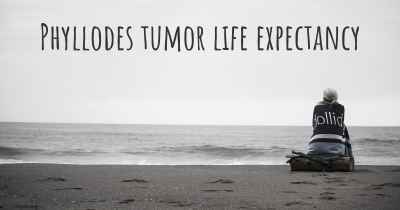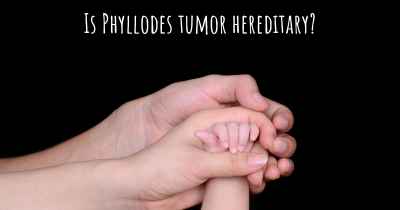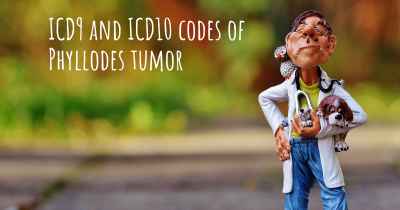What is the history of Phyllodes tumor?
When was Phyllodes tumor discovered? What is the story of this discovery? Was it coincidence or not?

Phyllodes tumors, also known as cystosarcoma phyllodes, are rare fibroepithelial tumors that primarily affect the breast tissue. These tumors were first described by Johannes Muller in 1838, who initially referred to them as "cystosarcoma phyllodes" due to their cystic and leaf-like appearance.
Early Observations:
Throughout the late 19th and early 20th centuries, several pathologists made significant contributions to the understanding of phyllodes tumors. In 1854, Karl Thiersch differentiated phyllodes tumors from other breast tumors, emphasizing their unique characteristics. In 1901, Arthur Purdy Stout classified phyllodes tumors into three categories based on their histological features: benign, borderline, and malignant.
Advancements in Diagnosis and Treatment:
Over the years, advancements in medical technology and research have improved the diagnosis and treatment of phyllodes tumors. In the 1960s, the introduction of mammography aided in the detection of these tumors, allowing for earlier diagnosis and intervention.
Classification and Grading:
Phyllodes tumors are classified based on their histological characteristics and behavior. The World Health Organization (WHO) classification system, introduced in 1981, categorizes phyllodes tumors as benign, borderline, or malignant. This classification system helps guide treatment decisions and predict patient outcomes.
Additionally, the grading of phyllodes tumors plays a crucial role in determining their aggressiveness. The grading system, proposed by Juan Rosai in 1989, assesses various histological features such as stromal cellularity, mitotic activity, and stromal overgrowth. Higher-grade tumors tend to have a higher risk of recurrence and metastasis.
Current Understanding and Research:
While the exact cause of phyllodes tumors remains unknown, researchers have made significant progress in understanding their molecular characteristics. Studies have identified genetic alterations, such as mutations in the MED12 gene, which are commonly associated with the development of phyllodes tumors.
Furthermore, ongoing research aims to identify potential biomarkers that can aid in the diagnosis, prognosis, and targeted therapy of phyllodes tumors. The identification of such biomarkers could revolutionize the management of these tumors and improve patient outcomes.
Treatment Approaches:
The treatment of phyllodes tumors typically involves surgical intervention, with the extent of surgery depending on the tumor's size, grade, and presence of metastasis. Wide local excision is the primary surgical approach for benign and borderline tumors, while mastectomy may be necessary for malignant tumors or those with extensive local involvement.
In cases where complete surgical removal is not feasible or when there is a high risk of recurrence, adjuvant therapies such as radiation therapy or chemotherapy may be considered. However, the efficacy of these treatments in phyllodes tumors is still a subject of debate, and further research is needed to establish their role.
Prognosis and Follow-up:
The prognosis of phyllodes tumors varies depending on various factors, including tumor grade, size, and the presence of metastasis. Benign tumors have an excellent prognosis, with a low risk of recurrence. Borderline tumors have an intermediate prognosis, while malignant tumors have a higher risk of local recurrence and distant metastasis.
Regular follow-up is crucial for patients diagnosed with phyllodes tumors to monitor for any signs of recurrence or metastasis. Imaging studies, such as mammography or ultrasound, along with clinical examinations, are typically performed at regular intervals to ensure early detection of any potential disease progression.
Conclusion:
Phyllodes tumors have a rich history of scientific observations and advancements in understanding their characteristics, diagnosis, and treatment. While they remain rare, ongoing research continues to shed light on the molecular mechanisms underlying these tumors, paving the way for improved diagnostic techniques and targeted therapies. With further advancements, the management and prognosis of phyllodes tumors are expected to continue improving, benefiting patients worldwide.
Posted Nov 26, 2017 by Sabrina 2500
Posted May 6, 2018 by Marie 2500
Posted Aug 10, 2020 by Simone Lovett 2550
Posted Sep 26, 2020 by Lucy 3570








